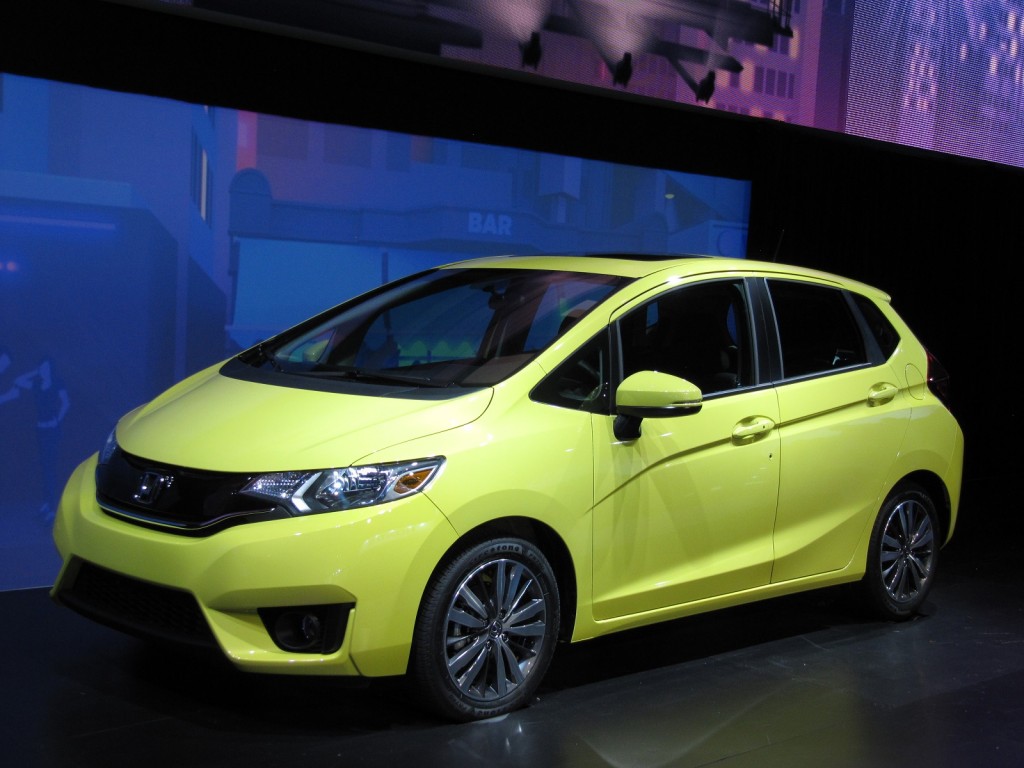Another year, another Detroit Auto Show.
The public won't pass through the doors of Cobo Hall until Friday, but the world's media have largely departed after two days' worth of press previews.
It felt like a somewhat flat show, despite rah-rah coverage in the local press, and it really had only three important global debuts.

2015 Ford F-150 live photos, 2014 Detroit Auto Show
Big pickup, but lighter
The first was the 2015 Ford F-150 full-size pickup truck, the next generation of the highest-selling vehicle in the United States.
The new big Ford pickup is big and brash, as always, but its cab and bed are built of aluminum alloy, reducing its weight by roughly 700 pounds.
When it goes into production later this year, the Ford truck will likely add 600,000 aluminum-bodied vehicles a year to the world's roads--tripling or quadrupling the total annual production of aluminum vehicles at one fell swoop.
MORE: Why Green Car Reports Writes About Full-Size Pickup Trucks
Right now, those aluminum cars are limited to large luxury vehicles: the Audi A8, Jaguar XJ, Range Rover and Range Rover Sport, and Tesla Model S.
Adding a full-size pickup to that list, one that currently carries a base price around $25,000, is a huge gamble for Ford--but shows how the company expects to meet increasingly stringent corporate average fuel economy (CAFE) rules from now through 2025.

2015 Mercedes-Benz C-Class live photos, 2014 Detroit Auto Show preview
Luxury bracket creep
The second important global debut was the latest generation of the Mercedes-Benz C-Class. It's moving up into mid-size sedan territory--meaning the E-Class above it is edging toward full-size, and the top-of-the-line S-Class is even larger.
There will be more four-cylinder engines, likely a hybrid version, and even a plug-in hybrid down the road for the C-Class. But it's no longer the smallest car in the Mercedes lineup, that slot now being occupied by the front-wheel-drive compact CLA-Class lineup.
The C-Class follows the latest Mercedes styling idioms, and will no doubt do fine--but it remains relatively evolutionary, compared to the CLA.
Mass-market mid-size sedan
Finally, there was the Chrysler 200, the all-new mid-size sedan that the Chrysler-Fiat combine desperately hopes will let it play in the high-volume but brutally competitive North American market for mid-size sedans.
The new 200 looks good, with a particularly elegant and sophisticated rear end, and it's built on an adapted platform from its Fiat parent that will give it the economies of scale Chrysler never enjoyed in years past.
Whether it succeeds in the market or not is anyone's guess; certainly the Dodge Dart that preceded it has been a sales disappointment on many levels.

2015 Honda Fit launch at 2014 Detroit Auto Show
Honda pitches a Fit
Aside from those two cars, the U.S. launch of the 2015 Honda Fit subcompact--now being built in Mexico--was the only real green-car news of significance.
MORE: 2015 Honda Fit: Full Details From 2014 Detroit Auto Show
There were any number of "concept cars" that were thinly disguised production models.
A smaller number of design studies and genuine concepts appeared as well, but none of them were specifically green.
And in the end, that was the message of this year's Detroit Auto Show: While it wasn't particularly "green," every production vehicle that appeared was more fuel-efficient than its predecessor.
No more green cars?
These days, there may be "green cars" (think Toyota Prius or Nissan Leaf), or cool cars that happen to be green (Tesla Model S), but every car is greener than it used to be.
That's not because the global auto industry has had an attack of conscience; it's because increasingly tight regulations on carbon emissions (Europe, Asia) and fuel efficiency (North America, China) are forcing it.
In the end, we suspect many or most of the world's car buyers don't want a "green' car.
Instead, they want a new vehicle that meets their needs, that they can afford, and that uses as little fuel as possible. And that's what Detroit offered.
Which is, more or less, good news.
For all the news from media days at the show, see our Detroit Auto Show news page.
_______________________________________________













